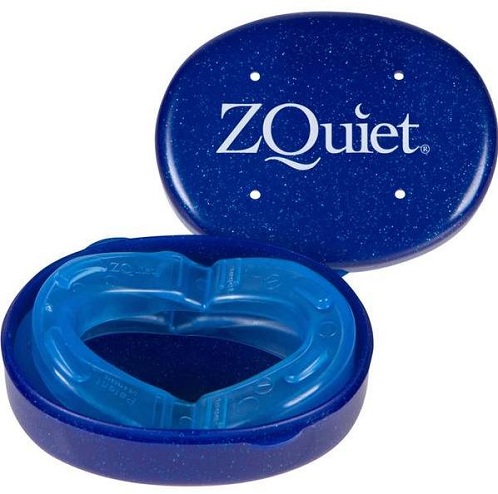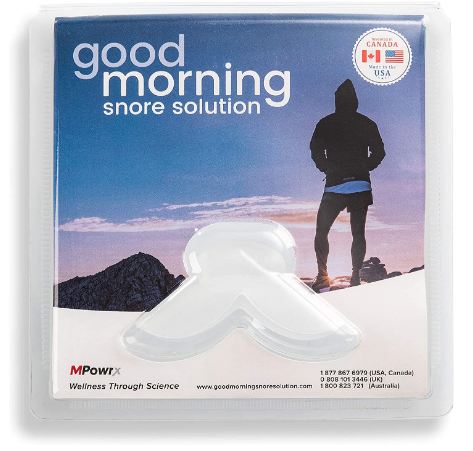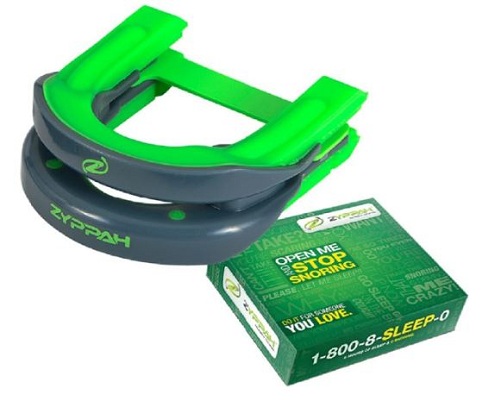Are you looking for anti-snoring mouthpieces?
Let us help you choose the right one.
Nearly half of Americans suffer from snoring. Snoring can occur because of airway obstruction or may be a sign of an underlying sleep disorder.
No matter what the cause of your snoring is, there are proven ways to reduce or eliminate it.
Anti-snoring mouthpieces or mouthguards are a great option to start with due to the lack of a prescription, low cost, and ease of use.
If you aren’t ready to take the plunge into costly machines and odd home remedies, then consider buying the best anti-snoring mouthpiece to see if it fixes your problem.
What's In This Buying Guide
Table of Contents
Snoring is a nuisance and disrupts your partner's beauty rest.
This guide will help you to find the anti-snoring mouthpiece that is right for you and your partner, regardless of whether you snore or not.
First, we recommend and review the top mouthguards to stop snoring and discuss their pros and cons.
We also discuss the different types and highlight the essential features to consider when purchasing one.
Finally, we discuss how to maintain snoring mouthpieces and answer some questions so you can choose the right mouthpiece for you.
Best Anti-Snoring Mouthpieces
- 1. Best Mandibular Alignment Device: ZQuiet Anti-Snoring Mouthpiece
- 2. Best Tongue Retention Device: Good Morning Snore Solution Mouthpiece
- 3. Best Hybrid Anti-Snoring Mouthpiece: ZYPPAH Anti Snoring Hybrid Oral Appliance
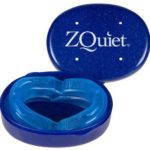
ZQuiet Anti-Snoring Mouthpiece
Best Mandibular Alignment Device
2 Size Options
Customizable:
NoAdjustable:
YesMaterial:
BPA free Medical Grade thermoplastic elastomerSleep Trial:
30 days
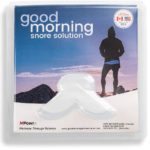
Good Morning Snore Solution Mouthpiece
Best Tongue Retention Device
3 Size Options
Customizable:
NoAdjustable:
NoMaterial:
Clinically safe plastic resinSleep Trial:
30 days
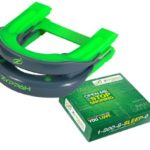
ZYPPAH Anti Snoring Hybrid Oral Appliance
Best Hybrid Anti-Snoring Mouthpiece
Universal Size Options
Customizable:
YesAdjustable:
NoMaterial:
FDA approved thermoplasticSleep Trial:
90 days
ZQuiet is used as a mouthpiece to prevent snoring. This MAD doesn't require customization.
ZQuiet comes in a set of two mouthguards. Each one is slightly smaller than the others. To find the perfect fit, you can use both.
ZQuiet eliminates the need to boil and bite. It also comes with a 30-day trial period and a 60-day money-back guarantee.
PROS
- For better comfort, use a hinged design
- Made from FDA-approved thermoplastic rubber elastomer
- You can use the box right out of the package
- Two mouthpieces available with different levels of jaw advancement
- Easy to maintain and clean
CONS
- Opening of small airways
- Not for people with full dentures or weak teeth
Our Review
ZQuiet's greatest selling point is the two different-sized mouthpieces. It was designed to be a starter kit for snorers.
One of the mouthpieces advances the lower jaw 2 millimeters forward while the other advances the jaw 6 millimeters forward.
ZQuiet suggests that you start at the 2-millimeter scale and increase to the 6-millimeter if you continue snoring.
The mouthpieces are made from high-quality medical-grade thermoplastic rubber elastomers. They automatically adapt to your jaw and mouth dimensions without the need for molds or customizations.
They can be prepared immediately without the boil-and-bite method. They can be used right out of the package.
The ZQuiet mouthpiece is easy to clean and comes in a storage box. In addition, it is more comfortable to use because of its hinged design. It also has small openings that allow for easy breathing.
The Good Morning Snore Solution Mouthpiece can help you stop snoring when your tongue is in the throat.
This TRD prevents your tongue and throat from moving backward. The Good Morning Snore Stop mouthpiece is made of soft resin and creates gentle suction that holds your tongue forward.
This device is easy to customize and can be customized in any size. It also comes with a 30-day money-back guarantee, a win-win situation.
PROS
- Simple and easy to use
- Compact and lightweight
- It doesn't require any adjustments or customization
- Be gentle with your jaw and teeth
- Work with crowns, dentures, implants, bridges, and implants
CONS
- Can cause tongue soreness
- Does nothing against nasal congestion
Our Review
The Good Morning Snore Solution is a top-rated anti-snoring mouthpiece. It has a flexible resin plastic construction, making it easy to use.
It is safe and effective, even though it isn't significantly different from other TRDs on the market.
Good Morning Snore Solution reduces snoring by moving the front of your tongue forward to improve stability. This stabilizes the airflow and ensures a good night's sleep.
This device is ready to go straight out of the box, unlike MADs.
It is safe for use with crowns, dentures, implants, or bridges.
Are you unsure of the cause of your snoring problem? You can get help with your snoring by using the Zyppah Anti Snoring Hybrid Oral Apparatus.
This device is a hybrid of TRDs and MADs.
This mouthpiece is MAD-style and includes a tongue strap that keeps your tongue from touching the throat.
The boil-and-bite technique allows you to customize the product according to your mouth anatomy. It also comes with a free 90-night trial so that you can quickly determine if it is right for your needs.
PROS
- Hybrid design solves snoring better
- You can customize it to fit your needs
- Made from FDA-approved materials
- It is easy to use and clean
- Universal size fits all mouths
CONS
- Non-adjustable
- There are no openings in the mouth for breathing
Our Review
Celebrities endorse the Zyppah antisnoring mouthpiece, and it has also been discussed on numerous TV shows.
This patent design is dual-functional and very effective against snoring. Zyppah Anti-Snoring Mouthpiece incorporates the principles of both MADs as well as TRDs.
The mouthpiece first moves your lower jaw forward. Next, the tongue strap pulls your tongue into a stable position.
It is difficult to adjust the device, so you will need first to prepare it using the boil-and-bite method.
The thermoplastic material used in the Zyppah antisnore device's upper and lower trays is made. Therefore, it is easy to create a unique impression.
Once you get the impression, you just need to place it in your mouth each night before sleeping.
Buying Guide: Anti Snoring Mouthpieces
What is an Anti-Snoring Mouthpiece – and How Does it Work?
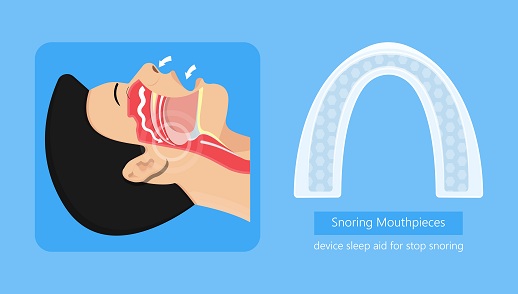
Snoring is when your airway becomes narrowed or blocked. An anti-snoring device is a device that fits inside your mouth to keep your airway open.
It is simple and has only a few parts, despite its effectiveness. It all depends on the anti-snoring mouthpiece that you use.
When you place anti-snoring devices in your mouth, they will increase your jaw by at most 1mm. In addition, some devices restrain your tongue, preventing it from falling back into the throat and constricting airways.
Different Types Of Anti-Snoring Mouthpieces
There are two types of anti-snoring mouthpieces: Tongue Restraining Devices and Mandibular Alignment Devices.
MADs
The medical term for your lower jaw is the mandible. As a result, your mouth can relax and slide back towards the back of your throat when you sleep. This position can constrict your airways and cause you to snore.
The Mandibular Alignment device, or MAD, is an anti-snoring mouthpiece. It aligns your lower jaw forward.
By biting on a MAD, you can hold it in your mouth. This is especially helpful for those who grind their teeth while they sleep.
MADs often have thermoplastic material in their upper and lower trays, where your teeth will fit. The boil-and-bite technique allows you to customize your MAD to fit your dental structure.
The MAD works best when your mouth is closed. This allows more air to flow through the nose and reduces the likelihood of snoring.
Nevertheless, MADs may still have small holes that allow airflow in and out of the mouth.
TRDs
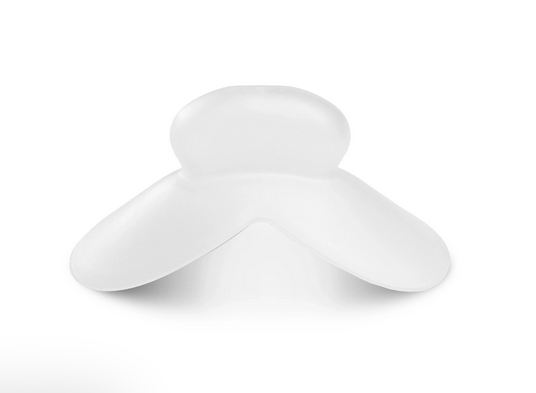
Snoring can also occur when your tongue is pulled back into your throat. This can block the airway and cause you to snore.
The Tongue Retention Device (or TRD) holds your tongue in place and prevents it from falling into this snoring-inducing position. To reduce snoring, it pulls your tongue forward so that there is a gap between your tongue and the back part of the throat.
It isn't as painful as it sounds, even though it might sound like medieval torture.
You should be prepared for some discomfort. However, it is normal to get used to it after a few nights.
The device achieves its purpose through a gentle suction, which acts as the restraining tool to keep the tongue away from the throat.
Keeping a TRD close to your nose can promote nasal breathing.
A TRD is not recommended for nasal congestion unless it has holes for oral breathing.
Why Choose An Anti-Snoring Mouthpiece Over Other Anti-Snoring Remedies?
Obstructed airways can also be a reason for snoring. But, again, your lifestyle and genes play an essential role.
Your anatomy, sinuses, weight, allergies, common cold, and alcohol intake can all contribute to a case of sawing logs.
Anti-snoring mouthpieces are a good choice, but they don't stop your sawing logs from churning.
There are many other anti-snoring products on the market.
Here are some comparisons between them and anti-snoring mouthpieces.
Anti-Snoring Mouthpieces vs. Anti-Snoring Chin Straps
Snorers have been debating the effectiveness of anti-snoring chin straps and mouthpieces.
A mouthpiece goes into your mouth to keep your airways open. On the other hand, a chin strap is elastic and keeps your mouth closed and in place to not snore.
Both effectively reduce snoring, but mouthpieces have the edge because they treat the root cause.
These combination devices can handle the problem of snoring. Combination devices can also retain your tongue and realign your mandible to stop snoring at its root.
While chin straps can prevent your mouth from blocking your airway, they don't retain your tongue, leading to snoring.
Anti-Snoring Mouthpieces Vs. Anti-Snoring Nasal Dilator
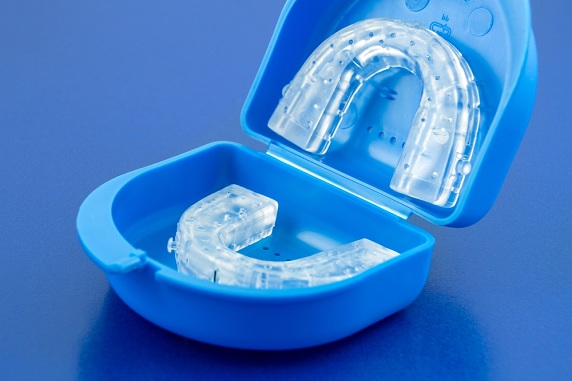
Nasal dilators are also known as nasal cones, vents, or clips. These nasal appliances keep your nose open for easier breathing and better sleep.
People snore because of restricted nasal passages. To improve airflow, nasal dilators open your nasal passageways and clear congestion.
Nasal dilators are not as effective at preventing obstruction of the throat. However, they can be used in conjunction with anti-snoring oral mouthpieces.
On the other hand, Mouthpieces work best when your mouth is closed. This is because they improve airflow and reduce snoring by reducing the pressure in your nose.
Anti-Snoring Mouthpieces Vs. High Loft Pillows
High-loft pillows are a popular way to reduce snoring. These pillows promote spinal alignment and raise your head, so your mouth stays closed. It does not block the airways or cause snoring.
High-loft pillows effectively reduce snoring problems related to the mandible, but they won't stop your tongue from falling back.
Anti-snoring Mouthpieces are the best choice for tongue retention and mandible alignment.
Anti-Snoring Mouthpieces vs. Anti-Snoring Nasal Drops
Nasal drops are a popular choice for snorers who want to stop snoring. Nasal drops are used to reduce snoring and lubricate the nasal passages.
However, these nasal drops do not prevent your tongue and mandible from falling forward. An anti-snoring microphone is a better option.
How to Use an Anti Snoring Mouthpiece
Using an anti-snoring mouthpiece greatly depends upon the type of device you have.
The MAD fits into your mouth like a gum shield. MADs are customized to fit your dental structures. You can use the boil-and-bite method to create your dental impressions. Here are the steps:
- Boil some water, then pour it into an open-mouthed vessel.
- Remove your mouthpiece from its packaging and immerse it in hot water.
- Use a tong or any other cooking utensil to hold it underwater for 30 to 45 seconds.
- Take it out and let it cool for about 10 seconds.
- To make impressions of your lower teeth, place them in your mouth.
- Move your jaw slightly, and then use your upper teeth for a bite on the thermoplastic.
- For approximately one minute, hold the device in this position.
- Take it out of your mouth, and then rinse it under cold water to set the impressions.
After you've created an impression on your MAD, you can simply slip it into your mouth every night before you go to sleep.
Although it may feel strange and uncomfortable for a few days, the MAD will become more natural in your mouth once the break-in period is over.
A TRD device, however, is much simpler to use.
Simply pinch the bulb between your index and thumb. You will need to place it in your mouth so that your tongue touches the bulb's edge.
Slowly loosen your grip and let the suction pull the tongue into the bulb. The device will gently pull on your tongue to keep it from restricting your airways.
Features To Consider: Anti-Snoring Mouthpieces

There are so many brands and products that it is easy to get lost. So here are some features to consider when choosing the right mouthpiece to snore.
Size
Mouthguards for snoring come in a universal size that fits most adult mouths or multiple sizes designed for different mouth anatomies.
Most anti-snoring jaw guards can be molded to fit your mouth perfectly. However, it is worth looking for an adjustable model that you can size differently to ensure the best fit for you.
Easy of Use
If you're a first-time buyer, the thought of waking up with a strange device in your mouth can be scary. If you choose a difficult device, it can ruin your entire experience.
You want to make sure that your device is simple and easy to use. You will eventually give up on it if you find it too complicated.
To find the right unit, you can search through all the listings and read reviews about mouthpieces.
Shape
It is essential to consider the shape of your mouthguard because it will work either by realigning your jaw or restraining your tongue.
A poorly shaped device is difficult to hold and causes discomfort.
To find out more about the shape of your mouthpiece and if it is a good fit, always check its dimensions.
Comfort
Although snoring mouthpieces can cause discomfort, they become more comfortable over time.
Some people prefer the MAD's jaw-advancing feel, while others prefer the TRD's tongue-retaining suction.
To find the one you feel most at ease with, you should try them all. This is where sleep trials are helpful.
Both can be tried during the trial period to determine which is most comfortable.
Flexibility
You can adjust the distance your jaw moves with some mandibular alignment lipspieces. With a non-adjustable device, you can gradually adjust your jaw to make it more comfortable.
Some MADs are manually adjustable, while others adjust automatically based on your mouth anatomy.
You might also consider non-adjustable options that may be a bit uncomfortable. However, as it allows for more flexibility, an adjustable device is better.
Design TRDs are not adjustable.
Material
Most mouthpieces used for snoring are resin, silicone, plastic, or a combination thereof.
Most TRDs are made from silicone resin. The moldable thermoplastic MADs are customizable to your specifications.
Anti-snoring lipsprays don't usually contain BPA or latex. However, you should still carefully read product descriptions to ensure they are made from quality materials.
Also, make sure to check for FDA approval. This is a sign that your mouthpiece is compliant with medical device regulations.
Ease Of Cleaning
It is essential to clean and maintain your mouthguard regularly, so you don't need to replace it often. You should choose a simple, easy-to-clean device.
We recommend that you rinse your anti-snoring device in hot water after every use to get the best results. You can use toothpaste and a toothbrush to clean your mouthpiece, while some units come with special cleaning products.
To prevent bacteria buildup, most MADs require that you scrub both the upper and lower tray. In addition, you must clean the inside of the tongue opening for TRDs.
Before you buy a model, check its ease of cleaning.
Pros & Cons
Although the benefits of mouthguards and anti-snoring devices are undeniable, there are also some drawbacks.
Let's take a look at each aspect to make an informed decision.
PROS
- These machines are less expensive than Positive Air Pressure (PAP), reducing snoring
- Boil-and bite molding is a way to create a custom impression of your upper or lower teeth
- Address the root cause of snoring
- It can be used in any position of sleep
- Compact and light
CONS
- Not recommended for people with sleep apnea or braces and dentures and TMJ problems
- Require regular care and maintenance
- After a while, wear out and require replacement
- Excessive drooling
- Take some time getting used to
Maintenance and Care
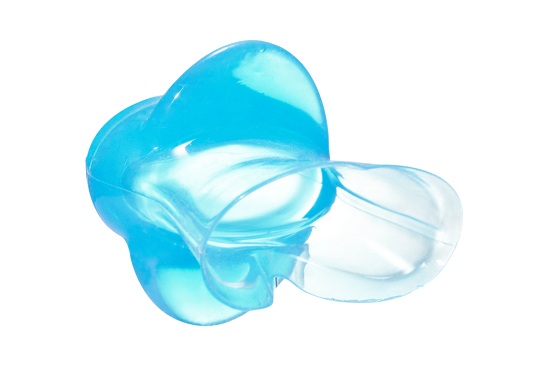
Regular cleaning and proper storage are the most important aspects of maintaining an anti-snoring device.
While cleaning instructions may vary between units, it is essential to sterilize your mouthpiece with hot water after every use.
To prevent bacteria buildup, it is essential to clean these devices. Some devices have proprietary cleaning products, but toothpaste and a toothbrush can also be used.
After cleaning the device thoroughly, place it in a dry, cool place. If yours does not come with one, make sure it is out of reach of children.
It is essential to keep your snoring device out of reach of animals who like to chew things. Your poodle shouldn't mistake your snoring device for a chew toy.
Frequently Asked Questions
Is an antisnoring mouthpiece safe for everyone?
Anti-snoring mouthpieces are generally safe to use. However, it is a good idea that you consult your doctor before using any anti-snoring mouthpieces.
They retain your tongue and pull your mandible forward, so they can cause mouth problems like temporomandibular disorder (TMJ) disorder.
Do you need a prescription to use an anti-snoring device?
You can buy TRDs and MADs without the need for a prescription from a doctor.
This does not mean you should be reckless. However, before using an anti-snore device, it is a good idea to consult your doctor or dentist.
Your doctor will make sure your anti-snoring device is safe for you. They may also work with you to determine the best fit so you get the best results.
Can I wear an anti-snoring device with dentures?
If you have dentures, you can cross off a MAD from your list. These devices require your teeth to move your mandible forward. This is not possible with dentures.
You can use a TRD for snoring.
Are mouthguards effective on bruxism (teeth grinding)?
A MAD snoring jaw piece is an excellent option if you grind your teeth while you sleep.
The MAD attaches to the teeth and holds them in the thermoplastic mold. It is very effective in preventing bruxism.
Final Verdict - What Anti-Snoring Mouthpiece is Best?
We have reviewed dozens of anti-snoring products on the market and found Zyppah’s Anti Snoring Hybrid Oral appliance to be the most effective.
This innovative hybrid design combines the functionality and convenience of both a MAD and a TRD.
The ZQuiet Anti-Snoring Mouthpiece, if you're only interested in a MAD, is a great option. You can customize it and choose from two sizes for a better fit.
The Good Morning Snore Solution Mouthpiece is a better option for TRD. It will stop your tongue from clogging your airways.

As a degreed engineer, I love new technology as much as you do (perhaps more). I also understand how to sort the best products from the rest. My team and I spend dozens of hours each week reviewing the best & latest products for your bedroom. Many are tested in-house, and others we break down based on our technical understanding. Whether you need a bed-cooling system, an adjustable bed, or a new CPAP machine – we've got you covered.


